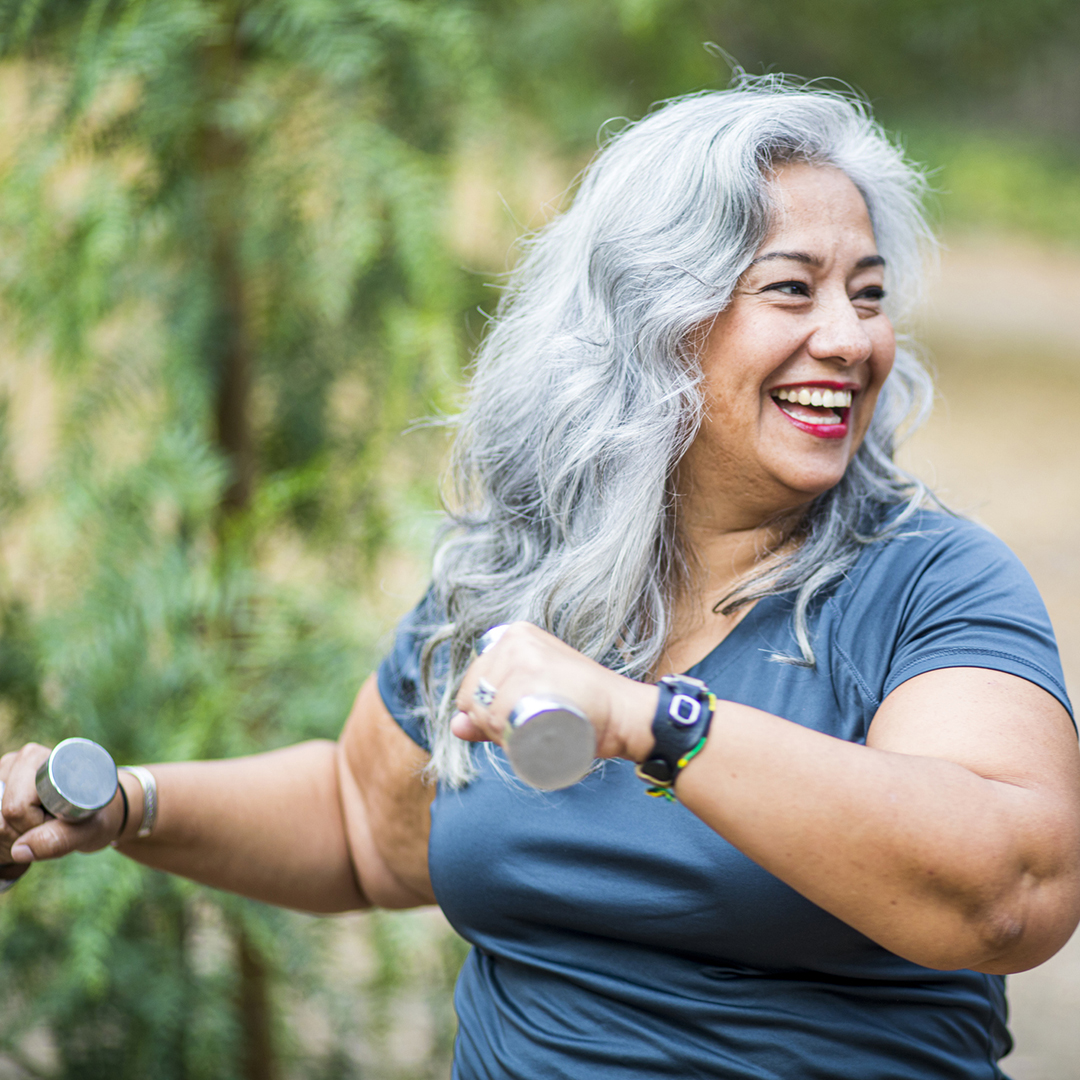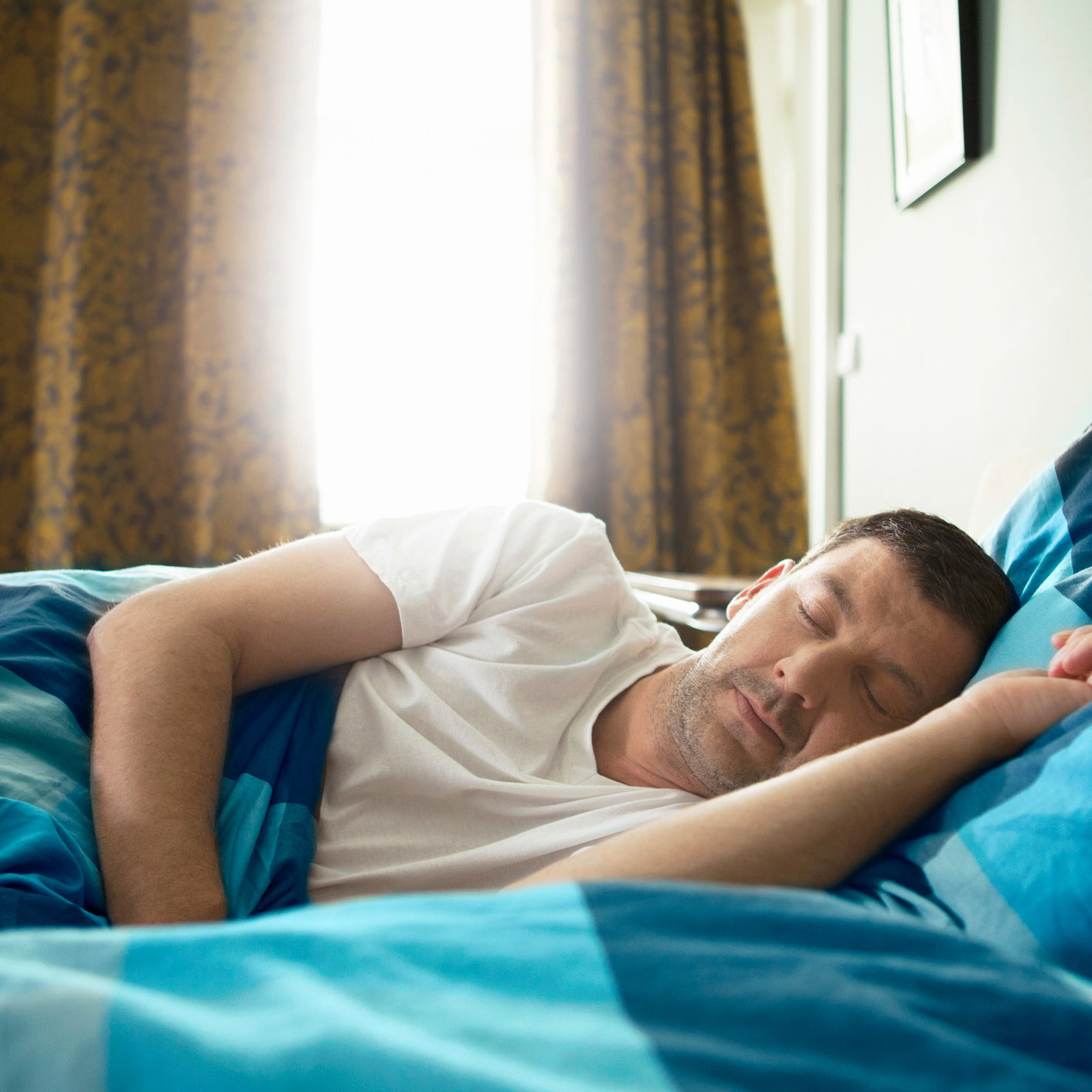Understanding your treatment options if you have osteoporosis

We often don’t think about osteoporosis until we end up with a broken bone.
“Osteoporosis is considered a ‘silent disease,’” explained Emily McDonald, a registered pharmacist with Express Scripts® Pharmacy. “It doesn’t have symptoms like a headache or fever to let you know something is wrong, and it can be hard to notice changes in your own physical appearance.”
Approximately 10 million Americans have osteoporosis. Additionally, as many as 44 million Americans have low bone density, which means they are at a higher risk of developing osteoporosis in the future.1
Here is everything you need to know about osteoporosis and the potential treatment options available for it.
What causes osteoporosis?
Throughout our life, our bones go through a process called remodeling, in which old or damaged bone tissue gets broken down and replaced by new bone tissue. This process keeps our bones healthy and allows them to repair.
Osteoporosis occurs when our bone breakdown happens faster than the body can replace it. The weaker bones become less dense and more brittle, making them more susceptible to fractures or breaks. People with osteoporosis can break a bone from a minor fall or simply just bumping into a piece of furniture.
Symptoms of osteoporosis
The most common symptom of osteoporosis is suddenly breaking a bone, especially after an accident that normally wouldn’t hurt you. Other symptoms include:
- Changes in posture, such as stooping or bending forward
- Loss of height
- Lower back pain
While osteoporosis doesn’t directly cause shortness of breath, it can be an indirect symptom of the condition. Osteoporosis can compress the vertebrae in the spine and make it more difficult for the ribs to expand when inhaling, which allows less air to move into the lungs. It’s important to note that shortness of breath can be a sign of life-threatening health conditions. If you experience shortness of breath, speak with your healthcare provider right away or visit your nearest emergency room.
Risk factors for osteoporosis
Several risk factors can increase an individual's risk of developing osteoporosis. They include:
- Age: Osteoporosis is more common in people aged 50 and older.
- Gender: Women are at a higher risk of developing osteoporosis than men, particularly pre- or post-menopausal women or women with irregular periods. During menopause, women experience a rapid decline in estrogen levels, which accelerates bone loss. Of the estimated 10 million Americans with osteoporosis, about 80% of those cases are in women.2
- Family history: You’re more likely to have osteoporosis if a parent or sibling has been diagnosed with osteoporosis.
- Stature: People with low body weight or a smaller frame are at higher risk of osteoporosis because they often have less bone mass.
- Physical activity level: Lack of weight-bearing exercise or physical activity can lead to weaker bones. At the same time, over-exercising without adequate recovery can potentially lead to bone fractures, which can weaken bones over time and increase the risk of osteoporosis.
- Smoking: Tobacco smoke slows the bone healing process and, therefore, reduces bone density. It can also interfere with the body’s ability to absorb calcium.
- Frequent alcohol use: Excessive alcohol consumption interferes with the body’s ability to absorb calcium and vitamin D, which are critical for healthy bone development.
- Low vitamin D and calcium levels: Calcium and vitamin D are the most important nutrients for bone health and to prevent bone loss. Having too little of these nutrients can contribute to decreased bone density. The Bone Health and Osteoporosis Foundation recommends between 1,000 and 1,200 mg of calcium a day and between 400 to 1,000 IU a day of vitamin D, depending on your age and gender.
- Medical conditions: Certain health conditions like thyroid disease, diabetes, inflammatory bowel disease, celiac disease, rheumatoid arthritis, and blood disorders can increase the risk of osteoporosis.
- Certain medications: Long-term medication use, especially with diuretics, corticosteroids, hormone therapy for cancer, and anticoagulants and proton pump inhibitors, may increase the risk of osteoporosis.
How is osteoporosis diagnosed?
A bone density test, also referred to as a DEXA or DXA scan, is the best way to diagnose osteoporosis and determine a treatment plan. The outpatient procedure uses radiation to measure the strength and quality of your bones.
The results are given as a T-score to predict future risk of fracture and if medication would be beneficial. The lower your score, the higher your risk of fracture.
The Bone Health & Osteoporosis Foundation recommends a bone density test for:
- All women aged 65 and older
- All men aged 70 and older
- Anyone who has broken a bone after age 50
- Women ages 50 to 64 with risk factors of osteoporosis
- Men ages 50 to 69 with risk factors of osteoporosis
The U.S. Preventive Services Task Force recommends screening for osteoporosis in women 65 and older and postmenopausal women younger than 65 who are at an increased risk of osteoporosis. However, they found insufficient evidence to make a recommendation for or against screening for men.
“Depending on your insurance plan, you may be able to get screened at no cost to you,” said McDonald.
If you don’t have insurance, you may still be able to get a free or low-cost bone density test at a health center near you.
Medications for treating osteoporosis
“The results of your bone density test screening, other clinical information, risk factors, and previous use of medications will guide you and your doctor on the appropriate therapy to make your bones stronger and reduce your risk of fracture,” explained McDonald.
There are several medications available for the treatment of osteoporosis:
- Bisphosphonates: These are a class of medications that help to slow down bone loss and reduce the risk of fractures by stopping the cells responsible for breaking down bones. Some examples include Fosamax, Actonel, Boniva, and Reclast. These medications are typically taken by mouth daily, weekly, or monthly. Zoledronic acid (Reclast®) is administered as an IV infusion.
- Raloxifene (Evista) is taken in pill form and mimics the beneficial effects of estrogen on bone tissue to help increase bone density and reduce the risk of fracture.
- Denosumab (Prolia®) is an injection under the skin given once every six months that stops the cells responsible for breaking down bone tissue.
- Teriparatide (Forteo, Bonsity) is a medication used to stimulate bone formation. It’s given as a daily injection and typically prescribed for individuals with a high risk of fracture.
- Abaloparatide (Tymlos®) is a self-administered injection under the skin that helps stimulate bone formation.
- Romosozumab (Evenity®) is a once-a-month pair of injections for 12 months that is approved for women who are post-menopausal and have a high risk of fracture.
- Calcitonin (Miacalcin) is a nasal spray used to regulate calcium levels in the body to help slow bone loss and relieve bone pain.
- Estrogen may be considered for postmenopausal women to help maintain bone density. It’s usually given in pill form, but also available in patch or gel. “This is not prescribed primarily for osteoporosis alone,” said McDonald. “But it’s a great option to help relieve other symptoms of menopause such as hot flashes and vaginal dryness.”
Many healthcare providers will repeat your bone density test one year after starting a new medication to monitor the effects of the medication.
Alternative treatments for osteoporosis
In addition to taking medication, there are several alternative treatments and lifestyle modifications that can help manage osteoporosis and support bone health. They include:
- Exercise: Engaging in regular weight-bearing exercise to strengthen muscles and improve balance (i.e., walking, yoga, Pilates, weightlifting, jogging, and dancing).
- Dietary changes: Including foods high in calcium in your diet, such as dairy products or leafy green vegetables, as well as vitamin D-rich foods or getting vitamin D through exposure to sunlight. Your doctor may also suggest over-the-counter or prescription calcium or vitamin D supplements.
- Fall prevention: Making sure your home and workspace are free from clutter to prevent falls. McDonald also recommends to patients that they keep a light by their bed in case they get up in the middle of the night, use a cane or walker to minimize risk for falls, and avoid walking in socks.
Our pharmacists are here to help
At Express Scripts® Pharmacy, we have pharmacists specially trained in women’s health issues, including osteoporosis, who are available 24/7 to answer all your medication questions and concerns. Our pharmacists can walk you through the details of your medications 24/7, from the convenience of your own home.
The Bone Health & Osteoporosis Foundation also offers free services to patients and caregivers. Their support community provides a place to connect with others, ask questions, and share information about osteoporosis and bone health.
1 Bone Health & Osteoporosis Foundation: Osteoporosis Fast Facts (accessed September 29, 2023): https://www.bonehealthandosteoporosis.org/wp-content/uploads/Osteoporosis-Fast-Facts-2.pdf.
2 Bone Health & Osteoporosis Foundation: What Women Need to Know (accessed September 29, 2023): https://www.bonehealthandosteoporosis.org/preventing-fractures/general-facts/what-women-need-to-know/.
Posted date: December 22, 2023


